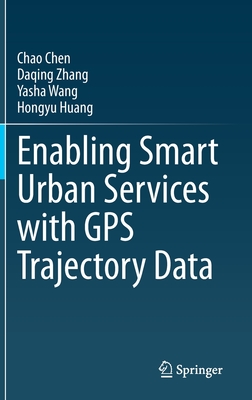Data Association for Multi-Object Visual Tracking
暫譯: 多物體視覺追蹤中的資料關聯
Margrit Betke, Zheng Wu
- 出版商: Morgan & Claypool
- 出版日期: 2016-10-11
- 售價: $1,680
- 貴賓價: 9.5 折 $1,596
- 語言: 英文
- 頁數: 122
- 裝訂: Paperback
- ISBN: 1627059555
- ISBN-13: 9781627059558
-
相關分類:
Computer Vision
海外代購書籍(需單獨結帳)
買這商品的人也買了...
相關主題
商品描述
In the human quest for scientific knowledge, empirical evidence is collected by visual perception. Tracking with computer vision takes on the important role to reveal complex patterns of motion that exist in the world we live in. Multi-object tracking algorithms provide new information on how groups and individual group members move through three-dimensional space. They enable us to study in depth the relationships between individuals in moving groups. These may be interactions of pedestrians on a crowded sidewalk, living cells under a microscope, or bats emerging in large numbers from a cave. Being able to track pedestrians is important for urban planning; analysis of cell interactions supports research on biomaterial design; and the study of bat and bird flight can guide the engineering of aircraft. We were inspired by this multitude of applications to consider the crucial component needed to advance a single-object tracking system to a multi-object tracking system-data association.
Data association in the most general sense is the process of matching information about newly observed objects with information that was previously observed about them. This information may be about their identities, positions, or trajectories. Algorithms for data association search for matches that optimize certain match criteria and are subject to physical conditions. They can therefore be formulated as solving a "constrained optimization problem"-the problem of optimizing an objective function of some variables in the presence of constraints on these variables. As such, data association methods have a strong mathematical grounding and are valuable general tools for computer vision researchers.
This book serves as a tutorial on data association methods, intended for both students and experts in computer vision. We describe the basic research problems, review the current state of the art, and present some recently developed approaches. The book covers multi-object tracking in two and three dimensions. We consider two imaging scenarios involving either single cameras or multiple cameras with overlapping fields of view, and requiring across-time and across-view data association methods. In addition to methods that match new measurements to already established tracks, we describe methods that match trajectory segments, also called tracklets. The book presents a principled application of data association to solve two interesting tasks: first, analyzing the movements of groups of free-flying animals and second, reconstructing the movements of groups of pedestrians. We conclude by discussing exciting directions for future research.
商品描述(中文翻譯)
在人類追求科學知識的過程中,經驗證據是透過視覺感知來收集的。電腦視覺中的追蹤技術在揭示我們所生活的世界中存在的複雜運動模式方面扮演著重要角色。多物體追蹤演算法提供了有關群體及其個別成員如何在三維空間中移動的新資訊。這使我們能夠深入研究移動群體中個體之間的關係。這些關係可能是擁擠人行道上行人的互動、顯微鏡下的活細胞,或是大量蝙蝠從洞穴中出現。能夠追蹤行人對於城市規劃至關重要;細胞互動的分析支持生物材料設計的研究;而對蝙蝠和鳥類飛行的研究可以指導飛機的工程設計。我們受到這些應用的啟發,考慮到將單物體追蹤系統推進到多物體追蹤系統所需的關鍵組件——數據關聯。
數據關聯在最一般的意義上是將新觀察到的物體的信息與之前觀察到的有關它們的信息進行匹配的過程。這些信息可能涉及它們的身份、位置或軌跡。數據關聯的演算法尋找優化某些匹配標準的匹配,並受到物理條件的限制。因此,它們可以被表述為解決“約束優化問題”——在這些變量的約束下優化某些變量的目標函數的問題。因此,數據關聯方法具有強大的數學基礎,並且是計算機視覺研究人員的有價值的通用工具。
本書作為數據關聯方法的教程,旨在為計算機視覺的學生和專家提供指導。我們描述了基本的研究問題,回顧了當前的技術現狀,並介紹了一些最近開發的方法。本書涵蓋了二維和三維的多物體追蹤。我們考慮了兩種成像場景,涉及單一相機或多個具有重疊視野的相機,並需要跨時間和跨視角的數據關聯方法。除了將新測量值與已建立的軌跡匹配的方法外,我們還描述了匹配軌跡段(也稱為小軌跡)的方法。本書展示了數據關聯的原則應用,以解決兩個有趣的任務:首先,分析自由飛行動物群體的運動,其次,重建行人群體的運動。我們最後討論了未來研究的激動人心的方向。






























